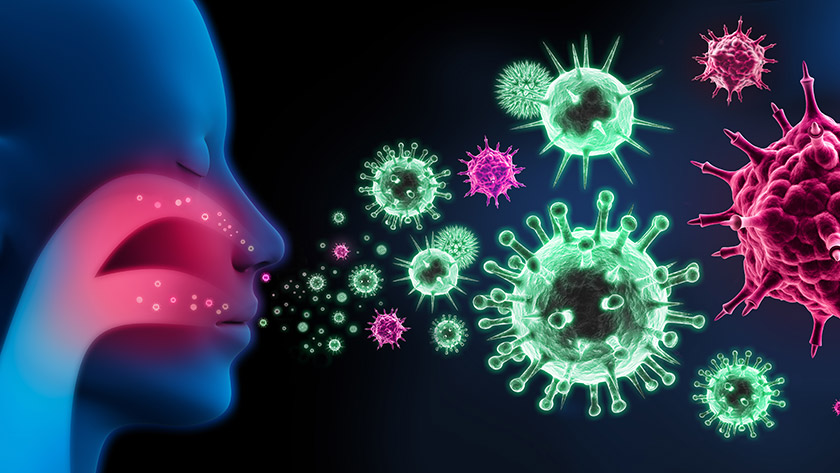Influenza A and influenza B cause seasonal epidemics in the United States and elsewhere every winter. Type C usually causes mild respiratory illness.
Some strains of influenza A, such as the H5N1 “bird flu” virus, occasionally infect humans, causing serious illness. Experts track these strains carefully, as they try to predict how they will change, and how they might affect people.
In this article, we explain the symptoms of flu, the treatment options, how it differs from a cold, and how to prevent the flu.
According to the Centers for Disease Control and Prevention (CDC), a person with flu may experience:
- a high temperature that lasts 3–4 days
- a stuffy or runny nose
- cold sweats and shivers
- aches that may be severe
- a headache
- fatigue
Not everyone with flu will have all of these symptoms. For instance, it is possible to have flu without a fever.
The symptoms of influenza typically come on suddenly. Initially, a person with flu may experience:
- a high temperature
- a stuffy or runny nose
- a dry cough
- cold sweats and shivers
- aches that may be severe
- a headache
- fatigue, and a feeling of being unwell
- a low appetite
Why do people sometimes have chills but no fever?
Flu symptoms in adults
Adults with the following symptoms should seek medical help urgently:
- breathing difficulties
- pain or pressure in the chest or abdomen
- dizziness, confusion, or loss of alertness
- seizures
- not urinating, which may indicate dehydration
- severe pain, weakness, and unsteadiness
- a fever or cough that goes away and then comes back
- a worsening of other existing health conditions
Flu symptoms in children
Children often have similar symptoms to adults but can also have gastrointestinal symptoms, such as nausea, vomiting, and diarrhea.
If a child has the following symptoms, they need emergency medical care:
- breathing difficulties
- rapid breathing
- bluish face or lips
- chest pain or ribs pulling inward as they breathe
- severe aches
- dehydration, for example, not urinating for 8 hours and crying dry tears
- lack of alertness or interaction with others
- a fever above 104°F or any fever in a child under 12 weeks of age
- a fever or cough that goes away but then comes back
- a worsening of any other medical conditions
Should children have flu medication? Find out more here about Tamiflu and its effects on children.
Flu symptoms in babies
Flu can be dangerous for babies. If symptoms appear, a parent or caregiver should seek medical help.
A baby with flu may:
- be very tired
- have a cough and sore throat
- have a stuffy or runny nose
- have a fever of 100°F or more
- have vomiting or diarrhea
The baby needs emergency medical attention if they:
- do not want anyone to hold them
- have a blue or gray skin color
- are breathing fast or have difficulty breathing
- have a fever with a rash
- have symptoms that go away but come back again
- show signs of dehydration, for example, not urinating
- do not wake up or interact
- have severe and persistent vomiting
What happens when a baby gets a cold?
Flu type A symptoms
If a person has the following symptoms, they may have influenza type A:
- fever and chills
- headache
- muscle aches
- fatigue
- weakness
- a stuffy or runny nose
- a sore throat and cough
Alex
Koordynator projektu




